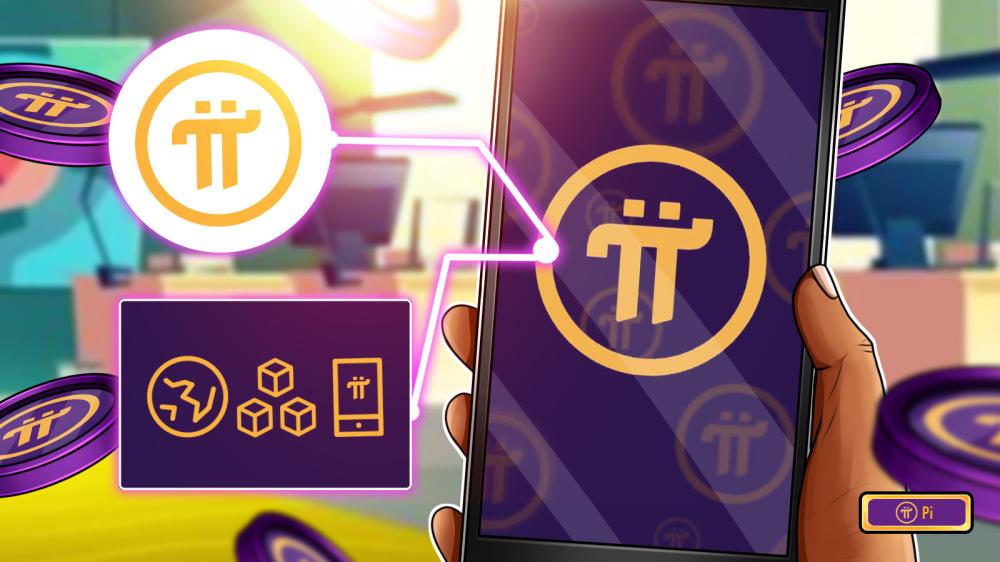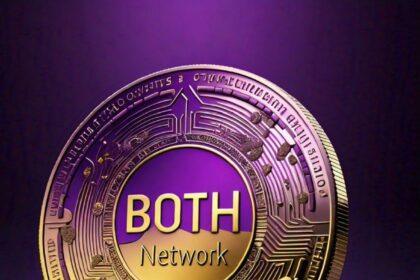The Pi Network has carved a unique niche in the cryptocurrency space with its focus on mobile-first mining. Launched in 2018, it promised a revolutionary approach, allowing anyone with a smartphone to participate in cryptocurrency mining without the need for expensive hardware or technical expertise. This accessibility attracted a massive global user base, drawn to the prospect of easily acquiring Pi coins through their phones. However, the project has become a source of significant debate and even controversy.
The core of the criticism stems from prolonged delays in transitioning Pi Network to a fully operational mainnet. A mainnet represents the vital, live blockchain network where transactions are validated and permanently recorded. It signifies the culmination of a project’s development, transitioning from a test environment to a fully functional, independent ecosystem. While Pi Network launched an “Enclosed Mainnet” in December 2021, it remains heavily restricted and controlled by the project’s developers. This lack of a fully open mainnet prevents Pi coins from interacting with other established blockchains or participating in the wider cryptocurrency ecosystem.
This delay has fueled skepticism among users who feel the project is failing to deliver on its promises. The extended “Enclosed Mainnet” period raises concerns about the project’s commitment to true decentralization, a core principle of blockchain technology. Without a clear timeline for a full mainnet launch and limited functionality within the current enclosed state, user confidence wanes. The lack of a readily available market for Pi coins further adds to the uncertainty. While the project’s initial focus on mobile mining attracted a large user base, their continued engagement hinges on the Pi Network’s ability to overcome these challenges and provide a clear path towards a functional and valuable cryptocurrency.
Understanding Pi Network’s Model
The Pi Network positions itself as a user-centric cryptocurrency platform designed for widespread adoption. To achieve this, it allows users to “mine” Pi coins directly on their smartphones without the energy-intensive requirements of traditional cryptocurrencies like Bitcoin. This simplified approach, coupled with an aggressive marketing strategy, contributed to its rapidly growing community.
However, the project has faced significant challenges in its journey to become a fully decentralized cryptocurrency. One of the most notable hurdles has been the prolonged delay in launching its mainnet.
What is a Mainnet?
In the world of cryptocurrency, the mainnet is the live, operational blockchain network where transactions are validated and permanently recorded. It represents the culmination of a project’s development, transitioning from a test environment to a fully functional, independent ecosystem. While A testnet is essentially a duplicate copy of a main blockchain designed specifically for testing and experimentation purposes. It shares the same underlying code and basic structure as the mainnet but operates independently as per CoinmarketCap.
Here’s a table differentiating between mainnet and testnet in the context of blockchain development:
| Feature | Mainnet | Testnet |
|---|---|---|
| Purpose | Live, operational blockchain for real-world transactions | Sandbox environment for testing, development, and experimentation |
| Value of Coins | Coins hold real economic value | Coins have no intrinsic value |
| Risk | Transactions involve real assets and carry financial risk | Experimentation without the risk of losing real funds |
| Stability | Designed for maximum stability and security | May experience instability, bugs, or resets |
| Accessibility | Often requires adherence to network rules and protocols | Generally more open for developers to join and test |
| Use Cases | Production-ready applications, cryptocurrency exchange, etc. | Testing new features, smart contracts, dApps, identifying vulnerabilities |
The Pi Network has been operating in an “Enclosed Mainnet” since December 2021. While this allows for some transactions within the Pi ecosystem, it remains heavily centralized and controlled by the project’s developers. Without complete decentralization, the value of the Pi coin cannot be accurately determined, and concerns arise regarding its long-term viability.
What is an Enclosed Mainnet?
- Intermediate Stage: An Enclosed Mainnet is a transitional phase for a blockchain project between its testnet and a fully open, operational mainnet. It represents a live blockchain network but with certain limitations or restrictions in place.
- Firewall Protection: The “enclosed” aspect refers to a firewall that prevents connections with external blockchains or third-party applications. This controlled environment safeguards the developing ecosystem in its early stages.
- Focus on Two Key Goals:
- KYC and Migration: Allows verified users (who have completed Know Your Customer processes) to migrate their balances from test networks or earlier versions to the live mainnet blockchain.
- Utility Building: Enables developers and the community to create applications and real-world use cases for the cryptocurrency within the protected confines of the Enclosed Mainnet.
Why use an Enclosed Mainnet?
- Controlled Growth: An Enclosed Mainnet gives the project time to develop infrastructure, ensure security, and build a solid foundation without the pressures of a fully open market.
- Ecosystem Development: It fosters a dedicated space for building utilities that give the cryptocurrency actual value and functionality.
- Gradual Decentralization: The Enclosed Mainnet can be a stepping stone towards full decentralization, where the development team gradually reduces control while the network matures.
The Pi Network Example
The Pi Network is a well-known example of a project currently operating in an Enclosed Mainnet. They launched their mainnet in December 2021 in this enclosed state to focus on mass KYC verification of users and building utilities before opening up the network to the wider crypto world.
Pros and Cons of the Enclosed Mainnet
Here’s a table outlining the pros and cons of the Enclosed Mainnet strategy in blockchain development:
Pros
| Feature | Explanation |
|---|---|
| Controlled Environment | Provides a safe space for initial development, testing, and balance adjustments without the volatility of an open market. |
| Security Focus | The protective firewall can help prevent external attacks and vulnerabilities while internal security measures are strengthened. |
| Building Real-World Utility | Gives developers and the community time to create applications, marketplaces, and use cases for the cryptocurrency within a protected space. |
| Gradual Decentralization | Allows for a controlled transition towards full decentralization, reducing the risk of network instability in early phases. |
Cons
| Feature | Explanation |
|---|---|
| Centralized Control | Until the enclosed period ends, the project retains a high degree of control, creating concerns about true decentralization. |
| Limited Functionality | Interactions with external blockchains or DeFi platforms are restricted, limiting the coin’s early utility and potential adoption. |
| Uncertain Timeline | If the enclosed phase is prolonged, it can erode community confidence and raise questions about the project’s viability. |
| Lack of Market Value | The coin’s real value cannot be established within the closed environment, creating uncertainty for holders. |
Important Note: The success of the Enclose Mainnet strategy depends heavily on the project’s transparency, efficiency during this phase, and its ability to deliver on the promise of a fully open and decentralized mainnet in a timely manner.
The Lengthy Mainnet Delay
Pi Network initially hinted at a mainnet launch sometime in 2021. However, that timeline has been repeatedly pushed back, leaving many users frustrated and questioning the project’s direction. While the Pi Network team has attributed the delays to various technical complexities and the need for rigorous testing, the lack of a definitive mainnet launch date has eroded trust within the community.
Criticism and Concerns
The protracted delay has amplified existing criticisms of the Pi Network model. Here’s a breakdown of some of the concerns users are reporting:
- Centralization: Despite promoting itself as a decentralized cryptocurrency, the Pi Network currently operates with a significant degree of control maintained by its core development team. This raises questions about the project’s commitment to true decentralization.
- Lack of Transparency: Skeptics have pointed to a lack of transparency around the project’s progress, roadmap, and the reasons behind repeated mainnet launch delays. This lack of open communication fuels uncertainty and speculation.
- Questionable Tokenomics: Doubts exist regarding the economic model of the Pi coin. The ease of mining on smartphones has led some to fear potential hyperinflation once it enters a truly open market.
- Exploitative Ecosystem: Allegations have surfaced about predatory apps within the Pi Network ecosystem that exploit users’ data and attention without delivering tangible value.
The Voice of the User
The user who reportedly claimed that the Pi Network has failed is not alone in expressing disappointment. A growing chorus of voices within the community is questioning the project’s longevity and the real value of the Pi coin. Feelings of disillusionment stem from the belief that the project is overpromising and underdelivering. The conversation surrounding Pi Network’s viability extends beyond the mainnet delay. Crypto enthusiasts point out that even if Pi successfully launches, its core functionalities might be outdated in the fast-paced world of cryptocurrency. Here’s a deeper look at some key arguments:
Pi I think has failed the target. Pi concentrated on peer to peer transactions while crypto world going defi (Stellar Network)where direct transaction to your bank is possible. Now turn to advertisement(ad network). Delay is dangerous. PI Network do it fast.
— Uchechukwu (@odezuluuche8) March 31, 2024
Peer-to-Peer (P2P) Focus Might Be Outdated
-
Integration with Traditional Finance: Projects like Stellar Network (XLM) are gaining traction by offering direct connections between crypto and traditional banking systems. This allows users to seamlessly convert between fiat currencies and crypto, a significant convenience factor for widespread adoption. Pi’s sole focus on P2P transactions within its own ecosystem might seem limiting in comparison.
-
Limited Use Cases: The current P2P model within Pi Network restricts its usability. While P2P transactions have their merits, the ability to easily convert Pi to other cryptocurrencies or traditional money opens doors for a wider range of use cases. This could be crucial for Pi’s long-term value proposition.
Decentralized Finance (DeFi) – A Missed Opportunity?
-
Exploding DeFi Market: Decentralized Finance (DeFi) is revolutionizing the financial landscape, enabling peer-to-peer lending, borrowing, and other financial services without traditional intermediaries. Projects like Uniswap (UNI) and Aave (AAVE) are experiencing explosive growth. Pi Network’s current model doesn’t seem to integrate with DeFi, potentially leaving it behind in this rapidly evolving space.
-
Loss of Potential Users: DeFi offers exciting new avenues for earning interest on crypto holdings or accessing financial services without geographical limitations. If Pi fails to adapt and incorporate DeFi aspects, it risks losing potential users who seek these functionalities.
Can Pi Adapt?
These arguments highlight the need for Pi Network to evolve and adapt to stay relevant. Here are some ways Pi could potentially address these concerns:
- Fiat Integration: Exploring partnerships or integrations with established financial institutions could allow users to convert Pi to fiat and vice versa, enhancing utility.
- DeFi Bridge: Building bridges to popular DeFi platforms could unlock new functionalities for Pi holders, allowing them to participate in DeFi activities like lending and borrowing.
- Expanded Use Cases: Partnering with merchants or creating a marketplace within the Pi ecosystem could expand the use cases for Pi coins, making them more valuable for everyday transactions.
The Future of Pi Network
The Pi Network team faces a critical juncture. While a successful mainnet launch is crucial, it won’t guarantee long-term success. Pi needs to demonstrate its ability to adapt and integrate with the evolving trends in the cryptocurrency space, particularly regarding DeFi and fiat integration. Whether Pi can address these concerns and carve a niche for itself in the ever-changing world of crypto remains to be seen. Only time will tell if Pi’s focus on mobile mining and P2P transactions is enough, or if it needs to embrace a more comprehensive approach to stay relevant. Read Something Similar

















Pi is a new digital currency developed by Stanford PhDs, with over 47 million members worldwide.
I am sending you 1π!
To claim your Pi, follow this link
https://minepi.com/dreamtreats and
use my username (dreamtreats) as your invitation code
I am sending you 1π! Pi is a new digital currency developed by Stanford PhDs, with over 47 million members worldwide. To claim your Pi, follow this link https://minepi.com/daiv101 and use my username (daiv101) as your invitation code.
📌 Premium packages
📌 Lion Private Round
📌 1 GEM = 150 LION
🚀💰 Want to be rich with ATH? Here’s your roadmap from zero to hero in no time👇
1️⃣ Start by downloading the Athene app – your gateway to financial empowerment.
https://play.google.com/store/apps/details?id=network.athene.app
Refferal code. 61b3fbe999
2️⃣ Invite your friends to join Athene and let them ride the riches train too.
3️⃣ Mine free GEM and convert them into LION and ATH monthly. The more you mine, the more you earn!
4️⃣ Cash in on your ATH by converting it to USDT, then use it to unlock Premium packages to get more Booster.
5️⃣ Keep the momentum going! Use your ATH to burn for additional Booster, maximizing your returns.
4️⃣ + 5️⃣ 👉 After getting more Booster, more GEM will be mined every day.
👉 Get more GEM, and you will get more ATH and LION monthly.
6️⃣ Then, wait for ATH to hit major exchanges like Binance and OKX, skyrocketing its value.
Note:
📍You can save time by the way to paying money for Premium packages from the beginning.
📍When you are Premium member, you will have the opportunity to receive an additional 10,000 USDT monthly.
🚀 Together, we’re not just investors – we’re builders. Let’s work hand in hand to make ATH bigger and better.
💎 With ATH and LION leading the charge, we’re destined for the moon! Who’s ready to embark on this financial adventure? Let’s go!
Related news:
📌 Burn 900 ATH to get 9000% Booster
📌 Open ATH trading on Athene P2P at 09:00 UTC April 4,2024.
📌 Market Development Lead for Athene Network
📌 50,000.00 USDT rewards for April event
📌 Athene Online Shop will be launched in the next few days
📌 $5,150.00 in prizes for Top 30 Silver Leaderboard
➖➖➖
#ATH #Athene #Network #AtheneNetwork #BTC #Binance #Okx #P2P #GEM #OpenEx #OEX #everyone #Pi #ice #IceNetwork #Satoshi #NewMiningApp #PiNetwork #ReviveChain #Coretoshi #web3community #NFT #IVENetwork #revivemining #Core
📌 Premium packages
📌 Lion Private Round
📌 1 GEM = 150 LION
🚀💰 Want to be rich with ATH? Here’s your roadmap from zero to hero in no time👇
1️⃣ Start by downloading the Athene app – your gateway to financial empowerment.
https://play.google.com/store/apps/details?id=network.athene.app
Refferal code. 61b3fbe999
2️⃣ Invite your friends to join Athene and let them ride the riches train too.
3️⃣ Mine free GEM and convert them into LION and ATH monthly. The more you mine, the more you earn!
4️⃣ Cash in on your ATH by converting it to USDT, then use it to unlock Premium packages to get more Booster.
5️⃣ Keep the momentum going! Use your ATH to burn for additional Booster, maximizing your returns.
4️⃣ + 5️⃣ 👉 After getting more Booster, more GEM will be mined every day.
👉 Get more GEM, and you will get more ATH and LION monthly.
6️⃣ Then, wait for ATH to hit major exchanges like Binance and OKX, skyrocketing its value.
Note:
📍You can save time by the way to paying money for Premium packages from the beginning.
📍When you are Premium member, you will have the opportunity to receive an additional 10,000 USDT monthly.
🚀 Together, we’re not just investors – we’re builders. Let’s work hand in hand to make ATH bigger and better.
💎 With ATH and LION leading the charge, we’re destined for the moon! Who’s ready to embark on this financial adventure? Let’s go!
Related news:
📌 Burn 900 ATH to get 9000% Booster
📌 Open ATH trading on Athene P2P at 09:00 UTC April 4,2024.
📌 Market Development Lead for Athene Network
📌 50,000.00 USDT rewards for April event
📌 Athene Online Shop will be launched in the next few days
📌 $5,150.00 in prizes for Top 30 Silver Leaderboard
➖➖➖
#ATH #Athene #Network #AtheneNetwork #BTC #Binance #Okx #P2P #GEM #OpenEx #OEX #everyone #Pi #ice #IceNetwork #Satoshi #NewMiningApp #PiNetwork #ReviveChain #Coretoshi #web3community #NFT #IVENetwork #Core
OpenEx OEX Wallet
https://oex.to/d/1YtksPn
#Athene #Network #ATH #Pi #PiNetwok #OpenEx #OEX
Good news Athene Network launched offical P2P trading Wesbite
Now you buy Sell … Ath Gem Pi on this Trading Site
Register your account link 👇
https://p2p.athene.network/register?invite_token=Pjl7JziaN6
https://www.btcs.love/invite/6yygn